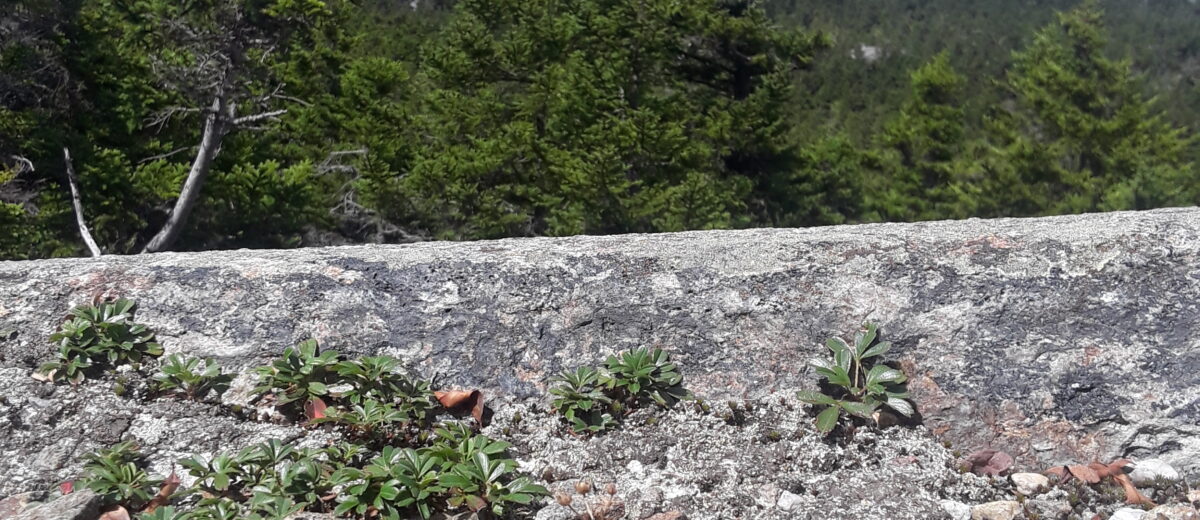The views from New England’s mountain summits are breathtaking. On a warm summer day, hundreds of people take in the view on any given summit. These crowds, combined with other disturbances such as fire, have significantly degraded the unique vegetation that ekes out an existence on the rocky summits. And now, summit vegetation faces new threats from climate change, including warmer temperatures and heavy downpours.
 The Sustainable Summits Project is asking how we can restore vegetation on New England’s mountain summits now, while ensuring restoration plantings, such as those at Cadillac Mountain, persist for decades as climates change. The Schoodic Institute is working with Acadia National Park and collaborators from Northeastern University to evaluate often recommended, but rarely tested, habitat restoration techniques, such as moving individual plants from warmer locations to help populations cope with warming temperatures. They will identify restoration best-practices through experiments with a common summit plant (e.g., three-toothed cinquefoil, Sibbaldiopsis tridentata). Ultimately, the sustainable summits project is a reproducible model for habitat restoration in a changing world and a way to ensure that mountain summits in the Northeast remain breathtaking for generations to come.
The Sustainable Summits Project is asking how we can restore vegetation on New England’s mountain summits now, while ensuring restoration plantings, such as those at Cadillac Mountain, persist for decades as climates change. The Schoodic Institute is working with Acadia National Park and collaborators from Northeastern University to evaluate often recommended, but rarely tested, habitat restoration techniques, such as moving individual plants from warmer locations to help populations cope with warming temperatures. They will identify restoration best-practices through experiments with a common summit plant (e.g., three-toothed cinquefoil, Sibbaldiopsis tridentata). Ultimately, the sustainable summits project is a reproducible model for habitat restoration in a changing world and a way to ensure that mountain summits in the Northeast remain breathtaking for generations to come.
